San Diego County
A Little About Us...
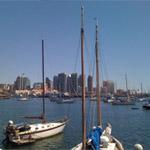 Coastal Resources Program focuses on a few topics and provides links to resources on many other issues that affect our coast, its people and resources.
Coastal Resources Program focuses on a few topics and provides links to resources on many other issues that affect our coast, its people and resources.
We provide research-based information on:
- Aquatic Invasive Species (coastal)
-
Quagga/Zebra Mussel Invasion (lakes)
For information on a wide range of coastal topics, please browse through our program features to the left and visit our publication pages to download documents.
New site address: http://ucanr.edu/sites/coast/
Tweets from @UCANRCoast
Boat Blog
 HOW MUCH IS TOO MUCH OIL?
HOW MUCH IS TOO MUCH OIL?
Zooming across a lake on water skis, motoring to a fishing spot, cruising the islands on vacation, or navigating a sailboat through a crowded marina, boaters know that engines help make boating fun! Boat engines need fuel and lubricating oil that can...
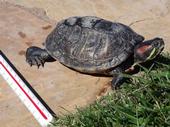 Red-Eared Invaders Threaten Native Turtles and Human Health!
Red-Eared Invaders Threaten Native Turtles and Human Health!
Did you have a pet Red-Eared Slider Turtle (Trachemys scripta elegans) when you were growing up? The distinctive red stripe on the side of the head is attractive and makes it easy to identify them.
The red-eared slider turtle is native in much of the...
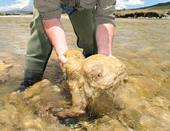 What the Heck is Rock Snot?
What the Heck is Rock Snot?
This icky sounding aquatic invader threatens tourism, fisheries and even hydropower facilities that depend on our streams and rivers. Why?
Rock snot, aka didymo (Didymosphaenia geminata), is a one-celled alga or diatom. Each tiny didymo grows a...
 Rat on Aquatic Invaders!
Rat on Aquatic Invaders!
Who ya gonna call? If you spot a suspected aquatic invader, where you report it depends on the critter or weed.
Remember to take photos with a camera or, even better, geo-tag them with a smartphone. Take a snapshot that shows just where you saw the...
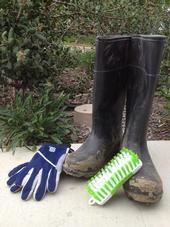 Decon Aquatic Invaders!
Decon Aquatic Invaders!
How can boaters, anglers, and anyone else who works or plays in wet places help stop aquatic invasive species from conquering new territory? Decon (decontamination) is critical. Invaders can hide in mud on the tread of your boots, cling to the hem of...
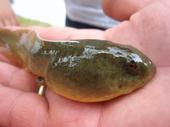 Plague of Invasive Frogs!
Plague of Invasive Frogs!
Look out, Kermit! There’s a plague of invasive frogs and they’ve got big appetites.
American Bullfrogs (Lithobates catesbeiana) arrived in California at least 100 years ago and are now widespread. Bullfrogs eat just about anything, such as...
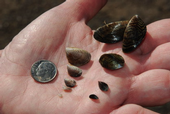 Aquatic Invasive Species en Español
Aquatic Invasive Species en Español
Getting the word out about especies invasoras acuáticas (aquatic invasive species) en Español is not just about translating English flyers and posters. For example the slogan, “Don’t Move a Mussel,” is catchy in English...
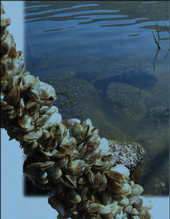 Invasive Mussel Eradication & Control Manual UPDATED!
Invasive Mussel Eradication & Control Manual UPDATED!
The UPDATED Quagga and Zebra Mussel Eradication and Control Tactics Technical Report is now available from UCANR Coastal Resources and from California Sea Grant. This practical and well-researched 36-page report was developed to help lake, reservoir and...
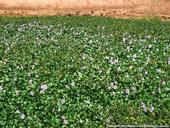 What Makes a Species Invasive?
What Makes a Species Invasive?
People, weather and migrations move species to new locations all the time. Most newcomers (non-natives) settle in, get along with the natives and don’t interfere with human activities. In fact, some non-native species are brought in as biological...
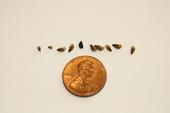 Invisible Invaders in the Mud!
Invisible Invaders in the Mud!
They’re not really invisible, but New Zealand Mud Snails (Potamopyrgus antipodarum) are so tiny you’d probably miss them in the mud on your boots. They can range from about 1/8 inch long to the size of a grain of sand. What’s the big...




